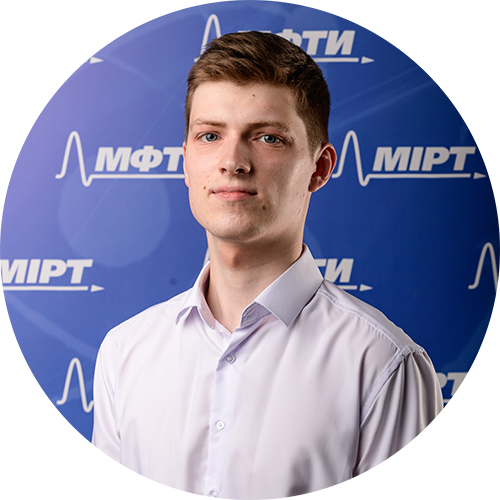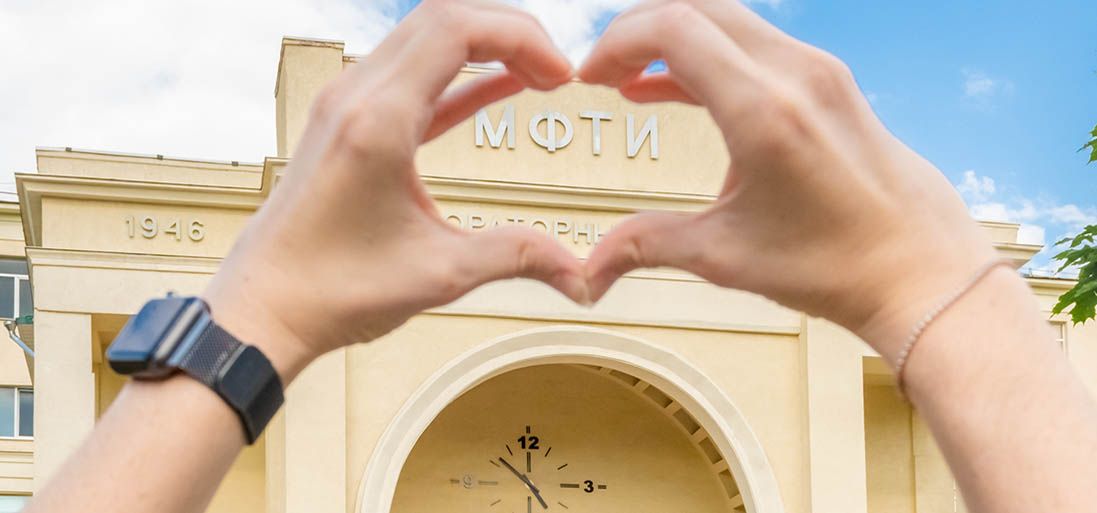Crypto education has become very popular in recent years. Many universities in the world offer unique educational programs for students who want to learn more about blockchain technology and cryptography. In Russia, the choice is not so great; local youth, however, also have the opportunity to receive a proper education.
The Master's program in blockchain was launched at the Moscow Institute of Physics and Technology in 2019 in partnership with Norilsk Nickel and IBM. The base organization is the laboratory of blockchain technologies of ANO “Idea” (Research Center). Students study the latest blockchain technologies, the structure and rules of operation of fundamental blockchain projects, cryptography and information security systems. Alexander Belenov, Head of the Blockchain Laboratory at the Idea Research Center, Co-Founder of the Blockchain Master’s program at MIPT, spoke about the educational program and the path of its development.
- How acute is the problem of the accessibility of a specialized education in blockchain in Russia and in the world? Why do you think young professionals in this field are mostly self-taught, despite the popularity of cryptocurrencies and blockchain technologies?
- Regarding the whole world, I probably won’t be able to say with authority and competence what is happening, but according to indirect indications, it is possible to get good education in blockchain technologies abroad. In Russia, the situation with this is indeed noticeably worse on the whole. The technology has not taken root in universities, and there is no such situation as in the United States, where you can see the blockchain in several well-known universities at once, in MIT, in particular. Why? I can't say for sure. Maybe the problem is that there are not so many good professionals who really understand blockchain. And this corresponds to the thesis that specialists in this field are mostly self-taught—there are few universities where they could be trained.
- How did the idea of creating a Master’s program in blockchain come about at all? Was it due to the need to cover the high demand for specialists in the market and interest to it among students, or the desire to launch an innovative educational program, or some other motives?
- First, it was the desire to educate good, competent specialists. When we started blockchain projects within the Norilsk Nickel ecosystem, there were quite a lot of those who consider themselves experts in the blockchain, but there were practically no real specialists. We had to train them. In developing projects, we ourselves gained a lot of interesting experience. Realizing that such staff is difficult to find, we spent a lot of effort on training. And these were not weeks by far, but months, sometimes up to six months. When a new, albeit competent, specialist came to the company, he would go all this way to understand blockchain technologies.
In 2018, at the Laboratory of High Energy Physics of the Moscow Institute of Physics and Technology, my colleague Vladimir Gorgadze (Head of the Master’s program “Blockchain” at MIPT, Associate Professor, Ph.D. in Theoretical Physics, University of California at Berkeley, professor with 27 years of experience) and the head of this laboratory Tagir Aushev (Doctor of Physical and Mathematical Sciences, Professor, Corresponding Member of the Russian Academy of Sciences, now the Scientific Director of the Idea Research Center), and I created the Blockchain Competence Center. After a year of intensive research, realizing the need for blockchain specialists in Russia, we decided to create a blockchain Master's program, which Norilsk Nickel still supports, and the Idea Research Center became its base organization. By the way, in the future, we plan to open a PHD course.
- Is the Master's program aimed only at students who have already received qualifications in IT and programming? Is it an opportunity to get a specialization based on basic technical education, not courses that allow you to master blockchain from scratch?
- Yes, the Master's program is aimed at people with IT skills. In order to study blockchain technology deeply, it is still necessary to have a good basic background related to programming and mathematics. Previously, for admission to our Master's program, one had to pass 2 exams, in mathematics and computer science; this year they were combined into one in both subjects. And this is quite a serious entrance test. Such a selection of students is not carried out because of the desire to maintain the image of the institution or because the exams for MIPT should always be difficult. The goal is different.
The first selection of students for the Master's program showed that when we took, in fact, all those who wanted to study, some courses that Master students need to know to study blockchain technologies turned out to be beyond their abilities. Because of this, the original curriculum had to be redrawn. Now the third enrollment is studying, and I think that all subsequent enrollments will come with good preparation and it will be incomparably easier for the students to study the courses that we offer as part of the Master's program. Blockchain is a system of several disciplines. These are topics related to cryptography, game theory, control theory, distributed databases, and operational management. If you dive into all this, the result will be a professional who can effectively and quickly solve the most complex problems.
One of the main problems that one has to face is when there is such a self-taught person who has read something about Ethereum, even started doing some practical things, but does not really understand how to design systems correctly. It turns out something very strange. With a poor level of security, they try to introduce blockchain where it may not be needed. And, thus, it is not for the benefit, but to the detriment of a specific project. Therefore, a good specialist, as in any other IT areas, needs to be prepared seriously, thoughtfully and not quickly. Our two-year program, in my opinion, is the minimum. If there was an opportunity, it would be fitting to teach for another year. As to self-taught people, this is a simpler scheme for studying anything, and this way of studying and learning the world has existed and will continue to exist. There is nothing really bad about this. It just seems to me that any good specialist who really wants to become an expert must definitely have systematic training.
- What were you guided by when compiling the Master's program? What was the criterion of the decision made whether a topic was needed or not? How did you manage to fit such a huge amount of material into a small time frame of one educational program?
- The program was formed virtually interactively. In the first year it was one program, by the second year it had already begun to transform, taking into account the pros and cons that we discovered during the first year of study. The third year also saw its own adjustments, but in the fourth year there will be significantly fewer changes. Yet the program is alive. It is subject to change to reflect the current situation. When we worked on the curriculum, we wanted to give students not only theoretical knowledge but also serious practice. The curriculum was not born easily. We intended to give three platforms—Ethereum, Hyperledger Fabric and Hedera Hashgraph—as proper tools for developing blockchain projects. But, unfortunately, the representatives of the Hedera Hashgraph project left the race, and today we have only Ethereum and Hyperledger Fabric among the taught subjects. In the curriculum, we also introduced such disciplines as "Game Theory", "Computation Complexity", "Cryptography" and theoretical courses—"Introduction to DLT" and "Tokenomics". With the development of the Master's program, we added a course in the Golang programming language, a course in databases, and distributed and operating systems.
We chose the subjects based on our understanding of what would be useful for a specialist who would undergo such training and whose tasks in the future would be not only the development of program code but also the development of architecture plus an expert assessment of third-party projects. That is, we relied on the fact that a graduate who took our Master's program must be a highly qualified developer, architect and expert in blockchain technologies. Based on the need for such a specialist, we selected courses. We also relied on our experience and knowledge. I hope that it turned out to be a fairly balanced and good program.
This year, by the way, our Master's program was ranked among the best study programs. BanklessTimes, an alternative finance publication, gave a list of the world's best universities whose curriculum includes subjects dedicated to blockchain. The MIPT Blockchain Master's program is the only one not only from Russia but also from Eastern Europe which made it to this list. It has the total of 54 universities, and the vast majority of educational programs are located in the USA, India, Spain and the UK.
- Were there any difficulties with the recruitment of professors? In blockchain, there is already a shortage of specialists, and you needed people with a high level of competence. Were teachers from other countries involved, or would local staff do?
- There are teachers not only from Russia. Some were attracted, and some were not. This is problem. It is a fact. Understanding of the subject by a specialist is one thing, and being able to present it is another. There are several levels of knowledge of the subject. The first one is I just know; the second one is I know and apply; and the third one is I know, I can apply, explain and teach. There are always fewer specialists on the third level. But we still managed to collect a team of professors. Now, it is very professional and competent.
And, by the way, today the Master program is gaining popularity not only as a place where you can get a quality education but also as a think tank. Over the past year, both individuals and firms, as well as representatives of State bodies, have repeatedly turned to us for advice. Therefore, we can safely say that we have successfully passed the stage of infancy and are now moving into a mature period.
- After the Master's program was launched, were any changes made to the program after it was tested on students? Were there any obvious problems or gaps in the program?
- As I noted above, the program is flexible and adjustments are made from time to time, but fewer and fewer every year. In the first year, it became obvious that several subjects were missing, so we added them to our curriculum. A part of the one-semester subjects has grown to two-semester ones. It turned out that within one semester it was simply not possible to cram into it all the information that was required to convey to the student.
And these few years have shown that we are shaping the curriculum well. Today, the demand for our specialists is such that none of the graduates stayed without work, and some master students work in their specialization, combining work with study. Graduate students who have successfully completed our curriculum gain in-depth knowledge of the fundamentals of DLT, both theoretical and practical. They can act as developers and architects of blockchain projects, and a two-semester course on tokenomics gives them the opportunity to be not only simple programmers but also experts in real business applications of DLT.
By the way, three graduates of the first graduation of the Master's program were offered jobs in the "Idea" scientific center. Now they are engaged, along with the rest of the staff, in the study of blockchain technology and its application in practice.
- Now you have a Master’s program, but is it planned to develop any educational programs for undergraduate students, or do they already exist?
- A crash course option will be prepared just for those who want to get acquainted with the technology from scratch. This applies not only to undergraduate students but also to a wider range of people. The purpose of such a course, in addition to the first acquaintance with technology, is also its popularization. In my opinion, it is important that as many people as possible understand what the pros and cons of blockchain technology are and where it will begin to appear in the very near future—in what spheres and with what application scenarios. This is important because this is literacy.
When there is a revolutionary advancement within a new technology, it is important to create a vanguard of people who understand and accept this technology and are also ready to use it. It is they who can become guides to the larger world of these technologies, since they will acquaint their friends with it and will carry knowledge to masses. As long as the technology remains niche (any technology, not just blockchain), there will be no explosive growth, and then it can hardly be considered a serious breakthrough technology. The blockchain already seems to be ready for becoming the most widespread technology. Moreover, it will be associated not only and not so much with cryptocurrencies and trade, but with everyday use, which in the coming years will become common for all of us.
We also had the opportunity to talk with Ivan Laishevsky, a graduate of the first enrolment of the Master's program at MIPT. He shared his impressions about the curriculum, spoke about his graduation project, and also mentioned the prospects for him after studying at the MIPT Master's program.
- You are a graduate of the first Master's program on blockchain at MIPT. Why did you choose blockchain and why did you opt for the Master's program at MIPT? Where did you study before?
At the time of my admission to the program (and, it seems, even now), blockchain was hype. Meanwhile, few people seemed to understand it. I wanted to be one of the first to explore these technologies and be well versed in them. Before my Master's degree, I got a Bachelor's degree from the Bauman Moscow State Technical University (the Chair of Computer-Aided Design Systems). I chose the Master's program at MIPT because, first, only this university in Russia had a full-fledged program (in other places there were no full blockchain programs, just courses, and so on, and I was not ready to go abroad), and, second, I wanted to try studying at the other strongest university in the country. Well, it is important that the Master’s program was free.
- What did you remember best about studying Master's degree?
From my studies in the Master's program, I remember best how the Hyperledger Fabric blockchain platform works, the modernization of which I presented in my final Master's thesis. And speaking in general, all the teachers were very well versed in their subjects, and all the training was very well delivered. There was a lot of interesting theory (tokenomics, game theory, graph theory) and practice (including those related to blockchain—designing and programming smart contracts, analysis and elimination of vulnerabilities in them—and an interesting course on cryptography). Some subjects, however, were given on the basis of those that I had not taken before (for example, the course "Computation Complexity" was given taking for granted that students already know "Mathematical Logic and Theory of Algorithms"), so I had to delve into everything that I didn’t know. But in the end, we did it.
- Upon graduation, the members of the examination committee praised your thesis as the most promising, and then you were even invited to work at the research center. Tell us more about what it was dedicated to and what problems/tasks did it solve?
- In my Master's thesis, I tried to solve the problem of the interaction of several blockchain networks—synchronization of user transactions of different channels of the Hyperledger Fabric blockchain platform (coordinated sending of transactions). Such an opportunity did not exist in Hyperledger Fabric because initially all channels are isolated from each other. The proposed solution made it possible to carry out cross-channel atomic sending of transactions while maintaining channel isolation. The value of cross-chain exchanges of tokens and transactions today is growing every day, because the number of blockchain projects is growing, and the popularity of blockchain technologies is increasing. The completed work provides another opportunity for cross-chain interaction for enterprise blockchain users.
The specialists of the “Idea” scientific center got interested in my diploma, and I was offered a job in the Blockchain Technologies Laboratory of the Center, which is the base organization for the Master’s program. The laboratory is engaged in research on blockchain technologies and the creation of new blockchain solutions. I also got involved in the study of blockchain technology and now I am doing research on the performance of various databases in the light of their application in the blockchain (in particular, in Hyperledger Fabric).
- How would you like to develop further? What challenges are you ready to take on and what tasks would you like to solve using the technology that you have chosen as the main one for your work?
- In the near future, I would like to conduct several studies useful for the development of blockchain technologies. I would also like to participate in the development of new projects that would allow us to change the established mechanisms of the economy for the better in the future. The prospects for blockchain technology are good. There are many applications for blockchain, such as supply chains (components, products, etc.), financial management (central bank digital currencies, digital financial asset platforms, cryptocurrencies), and digital identification (health passports, identity data, etc.).










